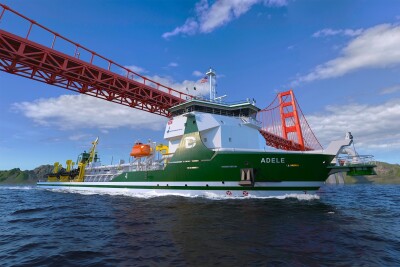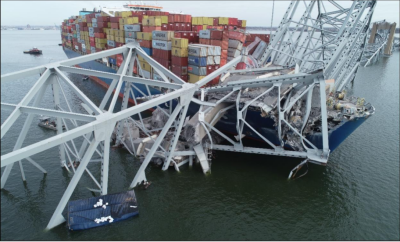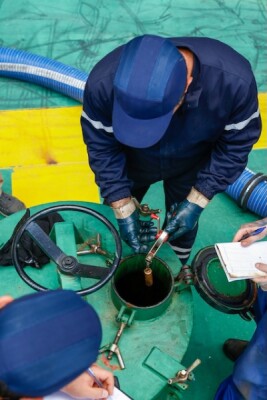A 10-month search effort paid off Monday night with the recovery of the voyage data recorder from the wreck of the El Faro – potentially providing new information on how the 790’ ro/ro containership sank during Hurricane Joaquin on Oct. 1, 2015, with the loss of all 33 crew members.
Technicians on board the 226’x42’x15’ Navy fleet tug Apache maneuvered the CURV-21, a deep ocean remotely operated underwater vehicle, down about 15,000' to the sea floor, where the voyage data recorder (VDR) had been located in April, still attached to the ship’s bridge mast structure, according to the National Transportation Safety Board.
Using specialized tools, the remote operators were able to extricate the VDR capsule, and bring it up to the Apache’s deck around 10:30 p.m. NTSB officials released a photo image of the capsule, immersed in fresh water for its trip back to the United States and analysis in an NTSB laboratory.
Like the flight data recorders on commercial aircraft, the El Faro’s VDR may have saved navigational and other data, communications and audio recording of what was happening on the bridge just before the sinking. The minimum design requirement for that type of VDR is 12 hours recording but it may have additional information that could be recovered, the NTSB said.

The wreck of the El Faro. NTSB photo.
In parallel to the NTSB’s investigation, the Coast Guard has been conducting a Marine Board of Inquiry into the disaster, calling witnesses at hearings in Jacksonville, Fla., home port of the TOTE Services ship.
“The recovery of the recorder has the potential to give our investigators greater insight into the incredible challenges that the El Faro crew faced, but it’s just one component of a very complex investigation,” NTSB Chairman Christopher A. Hart said in announcing the recovery.
The Apache remained over the wreck site Tuesday for additional photo and video documentation of the wreck and debris field to conclude the NTSB’s at-sea activities. The tug is due back to Naval Station Mayport in Florida on Friday.
A number of maritime institutions assisted the NTSB’s three search missions 41 miles northeast of the Bahamas, including the U.S. Navy and Coast Guard, the National Science Foundation and the University of Rhode Island and the Woods Hole Oceanographic Institute. WHOI’s 274’x52’x19’ research vessel Atlantis and its autonomous underwater vehicle Sentry discovered the VDR in April, amid wreckage of the ship’s bridge deck almost a mile from the hull.





